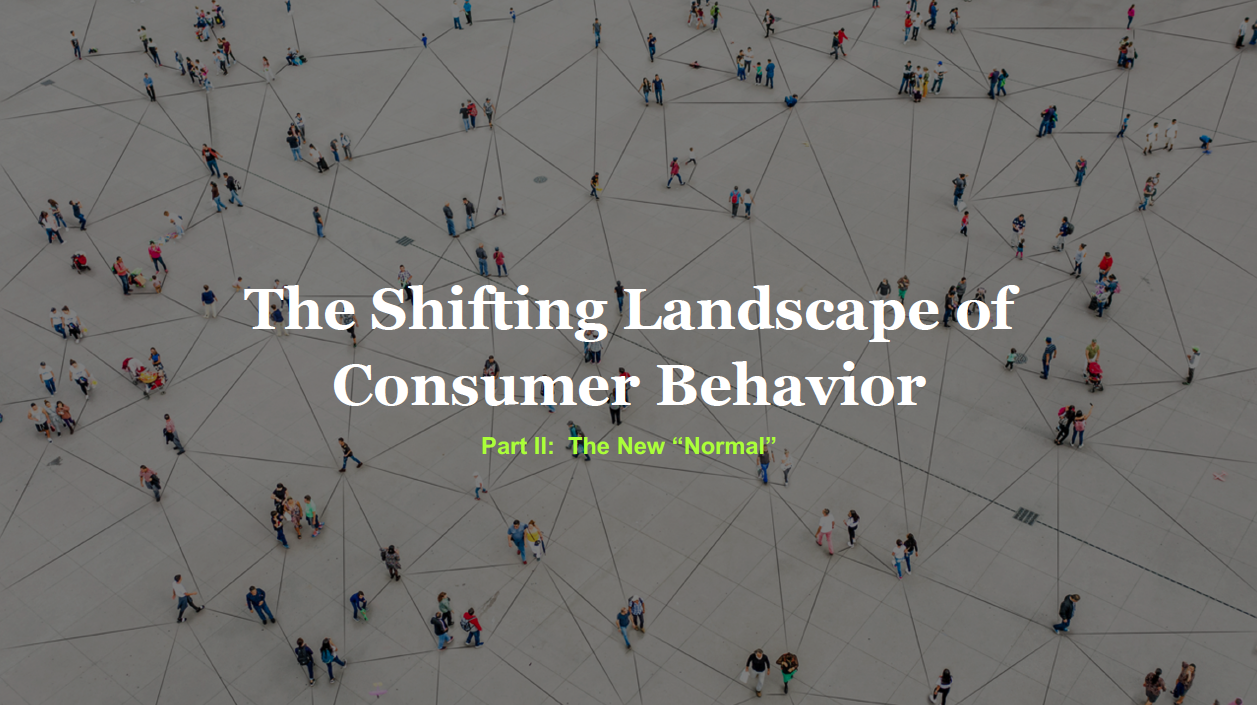Over the past month, we’ve spotlighted data on local-commerce foot traffic patterns — specifically in light of shifting behavior due to quarantining and other measures around the spread of Covid-19. After examining Foursquare and Ninth Decimal data releases, GroundTruth now joins the mix.
This creates a sort of public service announcement by volunteering the capabilities of its core technology that tracks large-scale opted-in mobile devices. This is normally done for O2O attribution and marketing insights, but here provides timely and telling insights on pandemic-related shifts in local commerce.
Like the above players, Ground Truth’s report looks at local foot traffic patterns within specific business categories. That includes grocery, big box, pharmacy, warehouse and restaurants among others. The results are mostly logical and expected but still valuable to see the magnitude of local commerce impact.
So what did the data uncover? Here are a few highlights:
Stocking Up
Grocery, big box, pharmacy, and warehouse stores nearly doubled as consumers rushed to stockpile essentials as stay-at-home mandates began rolling out throughout the country.
According to a survey by IRi fielded 3/13- 3/15, 73 percent of respondents were in stockpile mode, buying enough groceries they might need for 2-4 weeks.
GroundTruth observed major upticks to grocery, big-box, and warehouse stores during this time. Foot traffic to warehouse stores reached as high as 70 percent above average by March 15th.

Major Changes
As of April 1st, about 82 percent of Americans are under some sort of stay-at-home lockdown, including 33 states, Washington D.C., and Puerto Rico.
88 percent of consumers now say their shopping behavior has been impacted by Coronavirus, up +29%
from the week prior.
Panic Buying Appears To Be Slowing Down
38 percent of respondents are stocking up on products that they wouldn’t otherwise stock up on. This is a big decrease (-15%) from the week prior, indicating that while customers are still prepping their pantries, there is less “panic buying” than prior weeks.
24 percent of shoppers are making fewer but larger trips to buy groceries in order to limit the number of store trips.
Following a week of major spikes in store traffic in order to stockpile essentials, visitation data shows that shoppers are now making less trips to grocery, big box, and warehouse stores.
Panic buying appears to be slowing down as shoppers enter “restock” mode to replenish goods as the country braces for the stay-at-home extension.
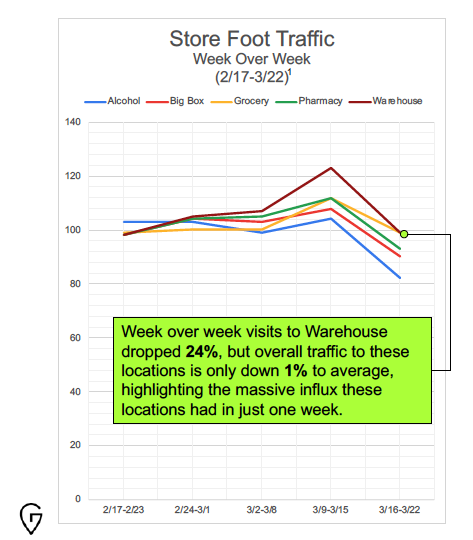
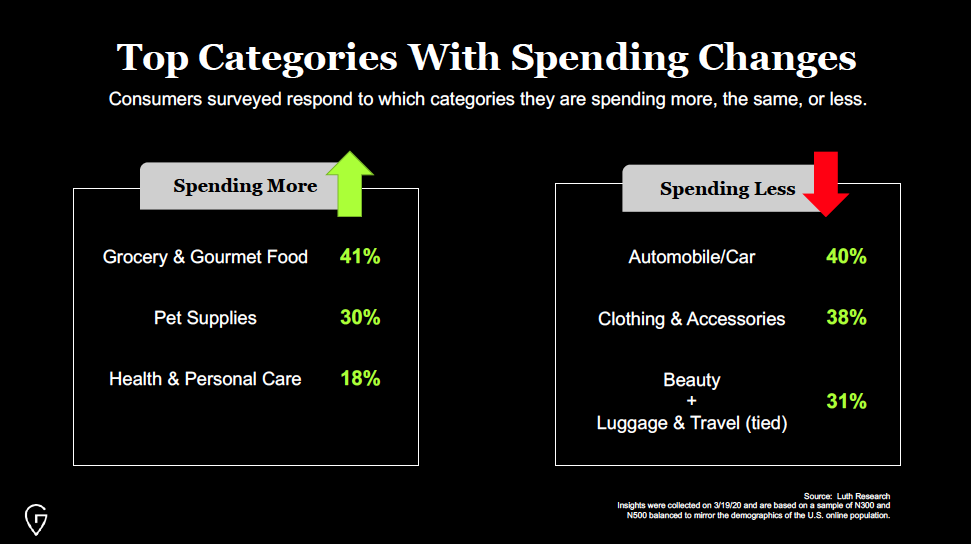
Slight Shifts to Online
32 percent of shoppers responded that they are making online purchases when they usually shop in-store, up from 28 percent the week prior (Source: Numerator).
Home in on Health
With the hyper-focus on health, it is no surprise that 18 percent of consumers are spending more on health & personal care.
Pharmacies have adjusted their day-to-day to make the shopping experience more convenient for their customers, including ramping up (often free) delivery and leveraging drive-thru windows to include
other essential goods, not just prescription pick-ups.
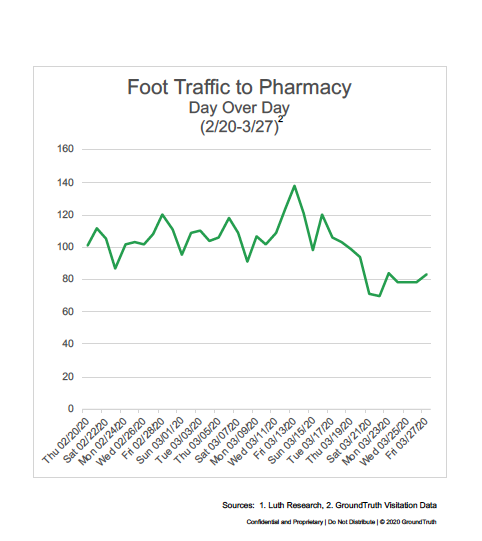
Restaurants/QSR
Dine-In typically represents 52 percent of restaurant industry dollars, but with the roll out of stay-at-home orders across the nations, restaurants have been quick to shift operations toward pick-up, delivery, and drive-thru to continue to serve patrons.
Total restaurant transactions decreased by 36 percent In the week ending March 22nd (Source: Fast Casual)
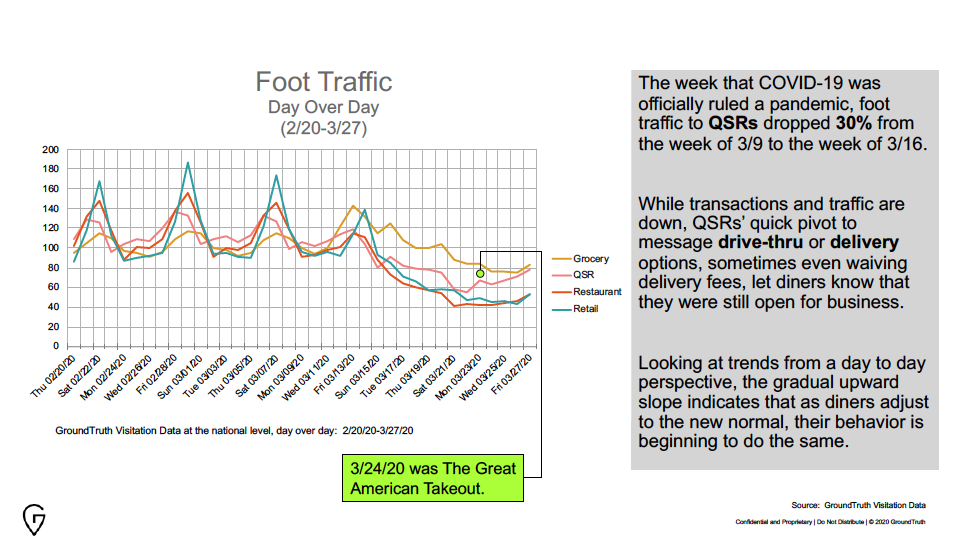
Stay tuned for more data releases from location-intelligence players that continue to examine the pandemic’s real impact on local commerce.

